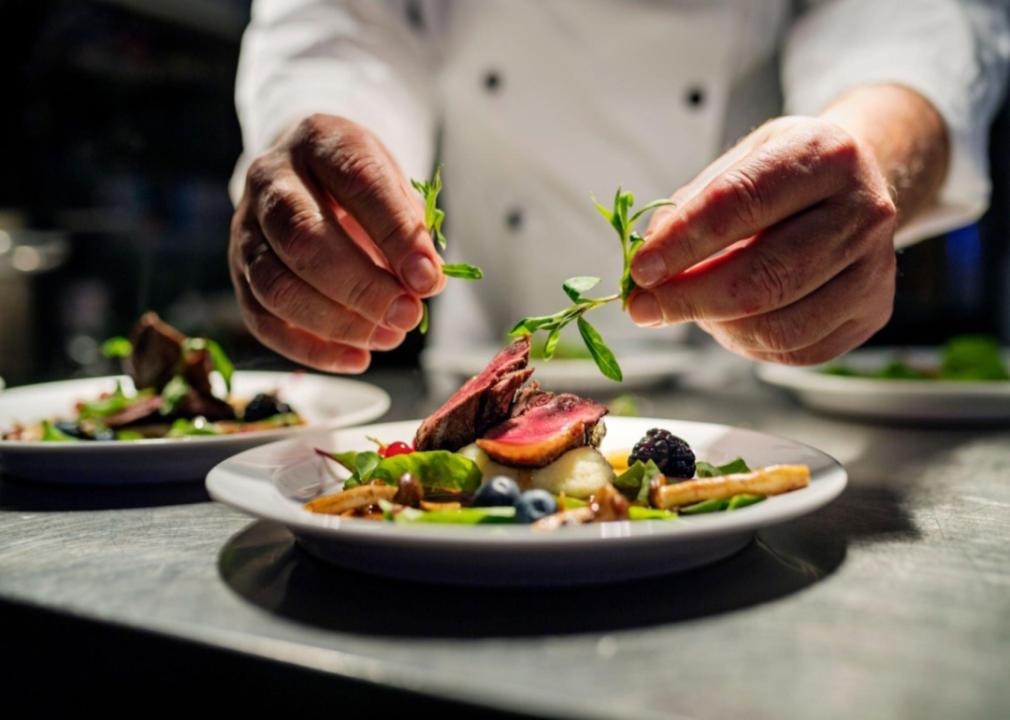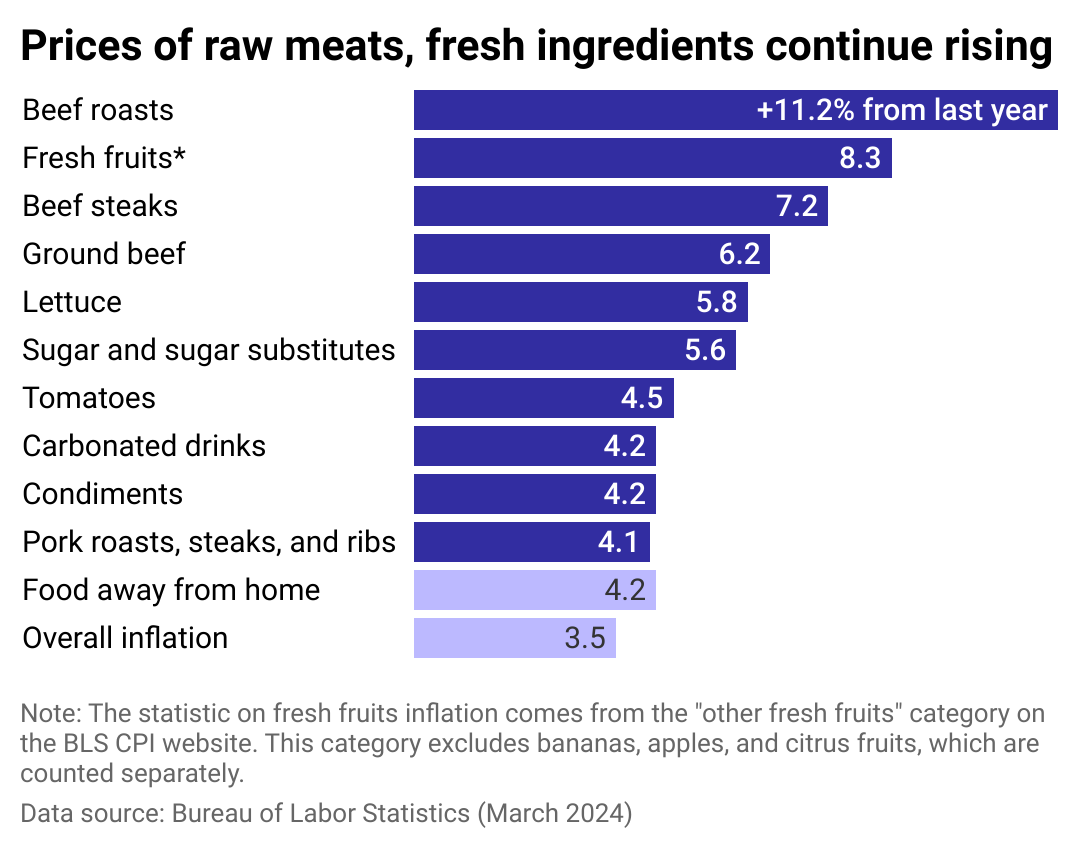10 ingredients that got considerably more expensive for restaurants this year

PixelPerfectionStock // Shutterstock
10 ingredients that got considerably more expensive for restaurants this year
A chef plating a colorful dish.
Everyone has felt the pain of inflation at the grocery store. For restaurant owners, whose bottom line is directly impacted by food costs and diners eager to order out—rapid cost increases can spell disaster. While people are still eating out, with fast-casual dining and coffee shop patronage up in 2023, visits to sit-down restaurants dropped by almost 5% that year compared to 2022, according to location analytics firm Placer.ai.
Find Businesses 4 Sale used Bureau of Labor Statistics data to identify 10 common restaurant ingredients whose prices escalated faster over the past year, pushing restaurant prices higher in turn. This analysis is based on annual inflation rates in March 2024.
The overall inflation rate in March was 3.5%, driven by rising costs of shelter and gasoline. This remains above the target 2% inflation rate the Federal Reserve typically aspires to. Inflation among groceries overall was actually more moderate, with costs rising just 1.2% over the past year. At the same time, the cost of eating out exceeded overall inflation, growing by 4.2%.
This is consistent with traditional markup trends at restaurants: Eateries typically charge double or triple what the ingredient costs them wholesale to cover other expenses and turn a profit, so higher food costs translate directly to higher prices for diners. At the same time, restaurant profit margins remain low—around 5% on average, with some variation depending on the kind of establishment. Food costs represent about a third of restaurant expenses, so increases in the cost of key ingredients can cut deeply into a restaurant’s profitability.
Raising prices is often a last resort for restaurants that don’t want to drive away customers—and when they do make increases, they attempt to do so gradually. This means some may still be increasing costs to level out the rampant inflation of 2022.
Labor comprises another third of restaurant expenses, so some of the higher pricing at restaurants is in response to increasing labor costs. Twenty-two states increased their minimum wage this year, which is especially pertinent to an industry that employs high numbers of minimum- and low-wage workers, according to an Economic Policy Institute analysis. Indeed, establishments particularly known for employing massive numbers of low-paid workers, such as fast-food restaurants and other limited-service restaurants, raised prices more than their full-service counterparts.
![]()

Find Businesses 4 Sale
Inflation among common restaurant ingredients contributes to higher dining costs
A bar chart comparing the inflation of 10 common ingredients, restaurant costs, and overall inflation over the year ending in March 2024. The individual ingredients are: Beef roasts, other fresh fruits (which includes everything but bananas, apples, and citrus fruits), beef steaks, ground beef, lettuce, sugar (and substitutes), tomatoes, carbonated drinks, condiments, and pork roasts/steaks/ribs.
Restaurants use various ingredients based on their caliber and cuisine. However, many ingredients are common across these lines: Raw meats, fresh produce, oils, and common seasonings like salt or sugar are used almost universally. Many items within these categories have experienced substantial inflation over the past year, and in some cases, the costs are expected to continue climbing.
Low cattle populations, spurred by drought conditions and higher supply costs to care for cows, could cause beef prices to surge to record highs this year. Weather issues have also contributed to increasing wholesale prices of strawberries, lettuce, and other fresh produce. These and other escalating ingredient costs create hardship for restaurants across the board.
Large restaurant chains have more purchasing power and influence with suppliers and are, therefore, typically more insulated from the immediate effects of ingredient inflation. Without that scale, independent restaurants are less able to negotiate or buy in the larger quantities that would save them money.
At the same time, smaller restaurants have greater flexibility to adjust other parts of their business to make up the difference. Restaurant owners reduce costs by reducing dish sizes, adding in higher proportions of lower-cost ingredients, substituting in less expensive ingredients, and limiting menu items to reduce the number of different ingredients they need to purchase. And, yes, raising prices—though they may increase the costs of flagship items that will continue to drive demand or add simpler, lower-cost dishes to their menus to continue providing affordable options.
Although food inflation may cut into profits, certain trends in restaurant visits promise to help many businesses weather the storm—as does the fact that the inflation of food and goods is holding steady overall. The fact that people are still eating out—often with increasing frequency is one positive sign. What’s more, surveys have shown that fewer diners considered prices when picking a local restaurant compared to a larger chain. Diners prefer to spend their money and dine at independent restaurants, bolstered by a growing sentiment to shop local and support small businesses in the wake of the COVID-19 pandemic.
Story editing by Nicole Caldwell. Copy editing by Paris Close. Photo selection by Lacy Kerrick.
This story originally appeared on Find Businesses 4 Sale and was produced and
distributed in partnership with Stacker Studio.
